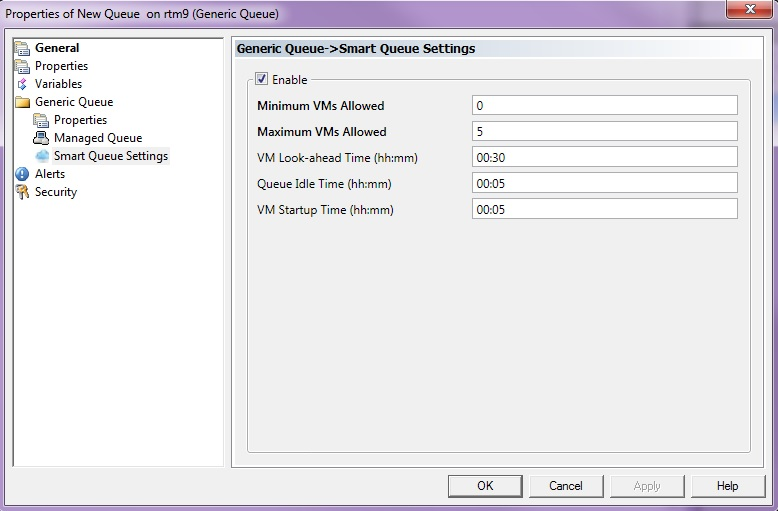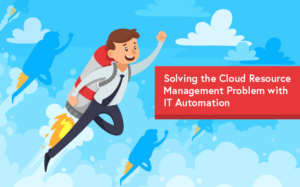Cloud Resource Management Problems: Not with IT Automation
Workload automation is stepping in to solve the problems of cloud resource management, providing smart queue capabilities and other out-of-the-box tools.

If you’ve ever left the air conditioning on full blast while you were away on vacation, you know the unpleasant surprise of seeing your power bill at the end of the month. Similarly, businesses who are using private or public clouds are struggling with the difficulty of managing cloud resources that need to be spun up and down depending on dynamically changing business needs. Just last month at Gartner ITxpo, we were talking with an attendee who had spent $15,000 more than budgeted in July on his public cloud due to machines that were never spun down.
In the days of the mainframe, IT departments had to worry about things like running out of storage space and power conditioning units or high electricity bills. Today, the availability of virtual and cloud computing gives organizations more flexible computing power in the amount they need it, when they need it. Moreover, cloud computing allows organizations to scale computing power up or down with just a click of a button. According to research by Gartner, nearly half of large enterprises will have hybrid cloud deployments by the end of 2017.
Despite the benefits of the cloud, managing and monitoring virtual and cloud resources is a significant challenge for businesses.
Because cloud resources are not infinite, IT departments must make choices on how to manage cloud resources in order to accomplish day to day operations and long term projects. But if IT isn’t managing or monitoring these resources, the problem of virtual sprawl (VM sprawl) creeps in as finite resources are unnecessary depleted.

VM sprawl is the proliferation of virtual machines that are consumed, but not actually used. These idle resources add up over time, resulting in higher costs to the business as well as missed SLAs and critical business process failures. And when resources are depleted, IT is forced to make a decision between buying more resources or simply doing less.
Just as smart thermostat systems like Nest raise and lower the temperature according to your activities, an intelligent automation solution can essentially spin up more machines when more computing power is needed to complete jobs as well as spin down machines during idle times.
Innovative tools like smart queue and managed queue are pushing the boundaries of traditional workload automation by providing a way for organizations to provision resources across virtual and cloud systems. Users can set broad infrastructure parameters that automatically create and utilize resources as needed.
For example, if you have a plan or multiple jobs that are running longer than expected, smart queue will automatically spin up other machines and build workflows to reconfigure the number of CPU’s, memory, etc. In addition to this, enabling the SLA Monitoring feature will automatically change job priorities and cordon off servers from other jobs so that the workflow can better meet SLA expectations. Additionally, support for virtualization systems like VMware or Hyper V and cloud offerings like Amazon EC2 or Microsoft Azure are helping optimize IT spending while reducing manual intervention.
3 Key Steps to Better Cloud Management
1. Take Stock of Resources
Today’s IT environment contains a complex array of heterogeneous applications, databases, and platforms. When using the cloud, organizations need a strategy for the amount of resources needed and how the resources allotted or used can be most efficiently utilized.
2. Automated Management
One of the biggest obstacles to better resource management is reducing the need for manual intervention. Cloud automation tools like smart and managed queue utilize scheduling analytics to automatically provision servers based on past usage and forecasted workloads. Analytics can pull data from past workflow performance, resource availability and capacity, and upcoming schedules to make predictions about possible execution times and durations of workflows, thereby reducing hours spent on manual management.
3. Resource Parameters
In order to ensure resources are efficiently allocated to specific processes so that SLAs are not breached, organizations need a way to monitor resource usage. Setting parameters on maximum and minimum VMs, configuring look-ahead times for VMs to spin up, and stopping VMs when they are idle and no longer needed for jobs are just some of the ways IT automation is helping organizations manage their resources. Additionally, creating a framework of alerts & notifications can assist IT organizations in gaining greater control and visibility over their resource usage.
With effective cloud resource management, businesses can achieve a more flexible IT infrastructure that is better able to respond to dynamic business needs while minimizing the risk of resource waste.
Leave us a comment and tell us how you are using automation or other tools to manage your cloud computing resources.









